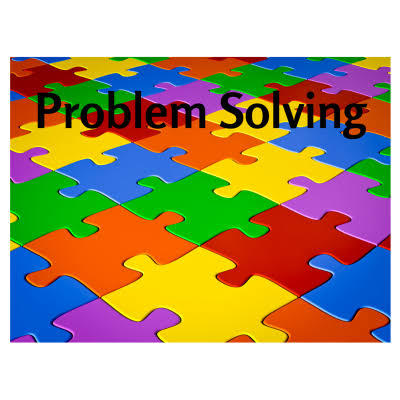Text
Tools for Creative Learning – LittleGraces Childcare In NSW

When selecting tools for creative learning, it’s important to consider the age, interests, and developmental stage of the child. Providing a variety of materials allows children to explore different areas of interest and discover their passions. Encouraging open-ended play and experimentation fosters creativity, problem-solving skills, and a love for learning in children. For more information on how Childcare centre incorporate these activities in regular daycare activities visit https://www.littlegraces.com.au/rooms/
#childcare nsw#childcare near me#child care centre#daycare activities#childcare centre#childcare centres nsw#child care centres nsw#child care centre near me#best child care centres in sydney#best childcare centre in eastern creek#childcare in nsw#Childcare nsw#Childcare menu
0 notes
Text
Key Socialization Skills That Children Typically Develop In a Child Care Centre -

In a Childcare Centre setting, children typically develop a range of socialization skills that are crucial for their overall growth and interaction with others. Here are key socialization skills often fostered in Childcare Centre:
1. Sharing and Taking Turns: - Learning to share toys, materials, and attention, as well as taking turns in various activities.
2. Cooperation and Teamwork: - Engaging in group activities and projects, fostering a sense of cooperation and teamwork.
3. Communication Skills: - Developing verbal and non-verbal communication skills, expressing needs, and listening to others.
4. Conflict Resolution: - Learning to resolve conflicts peacefully, express feelings, and negotiate with peers.
5. Empathy and Understanding: - Cultivating empathy by understanding and recognizing the feelings of others.
6. Independence and Self-Regulation: - Building independence in tasks like dressing and organizing belongings, as well as developing self-regulation skills.
7. Respecting Differences: - Appreciating and respecting differences in backgrounds, abilities, and interests among classmates.
8. Following Rules and Routines: - Understanding and following classroom rules and routines, promoting a structured environment.
9. Problem-Solving: - Developing problem-solving skills through various activities and challenges.
10. Initiating and Maintaining Friendships: - Learning how to approach others, make friends, and maintain positive relationships.
11. Responsibility: - Taking on simple responsibilities, such as cleaning up after activities or caring for classroom materials.
12. Listening Skills: - Enhancing active listening skills during group discussions, storytime, and instructions.
Childcare centre like LittleGraces Childcare in nsw provides a crucial social environment where children interact with peers and adults, laying the foundation for future social skills and emotional intelligence. These skills are not only important for academic success but also contribute to the child’s overall well-being and ability to navigate social situations throughout life. For more information on daycare activities and Parenting resources you can visit https://www.littlegraces.com.au/resources/
#childcare nsw#child care centres nsw#childcare near me#childcare centres nsw#daycare activities#child care centre#childcare centre#best childcare centre in eastern creek#best child care centres in sydney#child care centre near me#childcare centre nsw#childcare menu ideas#Childcare menu
0 notes
Text
Some Typical Activities And Lessons For Children In Childcare Centre – LittleGraces Childcare Nsw
Preschool activities and lessons are designed to engage young children in a variety of ways, promoting their cognitive, social, emotional, and physical development. Here are some typical activities and lessons for preschoolers:
1. **Circle Time:** - Morning routines, songs, and discussions to promote social interaction and communication skills.
2. **Storytime:** - Reading age-appropriate books to enhance language development, vocabulary, and listening skills.
3. **Arts and Crafts:** - Creative activities like drawing, painting, and crafting to develop fine motor skills and encourage self-expression.
4. **Outdoor Play:** - Structured and unstructured playtime outdoors for gross motor skill development and physical exercise.
5. **Math Exploration:** - Simple counting, sorting, and basic math concepts using hands-on activities and games.
6. **Science Exploration:** - Basic science experiments, nature walks, and observations to foster curiosity and exploration.
7. **Music and Movement:** - Singing, dancing, and playing musical instruments to enhance rhythm, coordination, and motor skills.
8. **Dramatic Play:** - Pretend play activities, like playing house or dress-up, to encourage creativity and imagination.
9. **Social Skills Development:** - Group activities, sharing exercises, and cooperative games to promote social interaction and teamwork.
10. **Letter and Number Recognition:** - Introducing letters and numbers through games, puzzles, and interactive activities.
11. **Basic Pre-writing Skills:** - Tracing lines, shapes, and patterns to develop fine motor control in preparation for writing.
12. **Health and Self-care:** - Learning about healthy habits, personal hygiene, and self-care routines.
Remember, these activities are usually adapted to the age and developmental level of each child, and a well-rounded preschool curriculum aims to provide a variety of experiences to support overall growth and learning. To know more about daycare activities and childcare menu you can visit https://www.littlegraces.com.au/rooms/ https://www.littlegraces.com.au/wp-content/uploads/2021/09/LilGraces-winter-menu.pdf
#childcare nsw#daycare activities#child care centre#childcare centre#childcare near me#child care centres nsw#best childcare centre in eastern creek#child care centre near me#childcare centres nsw#Childcare menu#best child care centres in sydney
0 notes
Text
Perceptual Skills Development In Kids – Little Graces Childcare Centre
Childcare centers play a crucial role in fostering perceptual skills development in kids through various activities and interactions. These centers often engage children in sensory play, arts and crafts, puzzles, and games that enhance their visual, auditory, tactile, and spatial awareness. Additionally, caregivers and educators facilitate activities that encourage observation, exploration, and problem-solving, all of which contribute to the refinement of perceptual skills in children. To know more about Little graces childcare centre visit https://www.littlegraces.com.au/
#childcare nsw#childcare near me#child care centre#childcare centre#child care centre near me#best childcare centre in eastern creek#best child care centres in sydney#daycare activities#childcare centres nsw#child care centres nsw#Msw Childcare#childcare menu ideas
0 notes
Text
Role Of Childcare Centres In Perceptual skills development is crucial – Little Graces Childcare Centre
Child care centre play a pivotal role in nurturing perceptual skills by integrating activities that stimulate sensory experiences into their curriculum:

**Structured Play**: Incorporating activities like puzzles, building blocks, and sensory bins into daily routines to enhance perceptual abilities.

**Outdoor Exploration**: Providing ample outdoor playtime to engage children’s senses with nature, promoting sensory development.

**Art and Creative Expression**: Encouraging artistic activities like painting, drawing, and sculpting, which stimulate visual and tactile perception.

**Music and Movement**: Involving children in music and movement activities to enhance auditory and kinesthetic perception.
**Sensory Integration**: Creating environments with diverse textures, colors, and materials to stimulate multiple senses simultaneously.
By weaving these daycare activities into our programs, LittleGraces child care centre create environments that foster holistic perceptual skills development in children, setting a strong foundation for their overall growth and learning. To know more about our Nsw childcare visit https://www.littlegraces.com.au/
daycare menu
#childcare nsw#Nsw childcare#childcare menu#child care menu ideas australia#little grace#childcare menu ideas#small graces#little graces childcare centre
0 notes
Text
Cultivating a Love for Reading in Kids: 10 Fun Strategies /LittleGraces Childcare Nsw

In today’s digital age, getting kids to pick up a book can be a challenge, but instilling a love for reading in them is invaluable. Reading not only enhances language skills but also nurtures imagination and creativity. In this blog, we’ll explore ten creative strategies to engage kids in the wonderful world of books.
1. Create a Reading Nook: Design a cozy and inviting reading nook in your home. Stock it with a variety of age-appropriate books, comfy cushions, and soft lighting. A dedicated space for reading can make the experience more enjoyable.
2. Lead by Example: Children often mimic the behavior of adults. Demonstrate your own love for reading by regularly picking up a book, magazine, or e-reader. When kids see you reading, they are more likely to follow suit.
3. Visit the Library: Frequent trips to the local library can be an adventure for kids. Let them explore the shelves, choose their own books, and participate in library events or reading programs.
4. Make Reading Interactive: Engage kids in the storytelling process by asking questions, discussing the plot, and predicting what might happen next. This interaction makes reading a shared experience.
5. Set a Reading Routine: Establish a reading routine by setting aside a specific time each day for reading. This consistency helps kids view reading as a regular and enjoyable part of their day.
6. Use Technology Wisely: Leverage technology by introducing e-books or audiobooks. Many apps and platforms offer interactive stories that can captivate kids’ attention while improving their reading skills.
7. Encourage Variety: Expose children to various genres, from fiction and non-fiction to comics and graphic novels. Offering a range of options allows them to discover their reading preferences.
8. Organize Book Clubs: Arrange or join a kids’ book club. This encourages social interaction and fosters a sense of community among young readers. Discussing books with peers can make reading more appealing.
9. Reward Reading: Implement a reward system to motivate kids. For every book they finish, offer small incentives like stickers, extra playtime, or a special treat. Rewards can help create positive associations with reading.
10. Celebrate Milestones: Celebrate reading milestones, such as completing a series or hitting a certain number of books. Host a little party or plan a special outing to acknowledge their achievements.
Instilling a love for reading in kids is a rewarding journey that requires patience and creativity. By creating a reading-friendly environment, leading by example, and making reading a fun and interactive experience, you can inspire a lifelong passion for books in your children. Remember, the joy of reading is a gift that will benefit them throughout their lives. For more Parenting resources visit https://www.littlegraces.com.au/resources/
#childcare nsw#child care centres nsw#childcare near me#childcare centres nsw#daycare activities#child care centre#childcare centre#child care centre near me#best childcare centre in eastern creek#best child care centres in sydney#Parenting resources#Parents guide
0 notes
Text
High-Quality Childcare Can Be A Positive And Enriching Experience - LittleGraces Childcare Nsw
The decision to put a small baby in childcare centre is a personal one and depends on various factors, including your family’s specific circumstances, needs, and preferences. Here are some considerations to help you make an informed choice:
1. Parental Work Situation: If both parents need to work due to financial or other reasons, childcare may be necessary. It can provide a safe and supervised environment for your baby while you’re at work.
2. Social Interaction: Childcare can introduce your baby to social interaction with other children and caregivers, which can be beneficial for their development.
3. Quality of Care: Research and choose a high-quality childcare center or provider that aligns with your values and meets your standards for safety, hygiene, and child development.
4. Caregiver Qualifications: Ensure that the caregivers at the childcare centre are well-trained in infant care, CPR, and first aid, and have experience with babies.
5. Flexibility: Consider your work hours and how well the childcare arrangement aligns with your schedule. Some parents opt for part-time or flexible childcare options.
6. Family Support: If you have extended family or trusted friends who can help with childcare, this may also be a viable option.
7. Maternity/Paternity Leave: In some countries, parents are entitled to maternity or paternity leave, which allows for more time at home with the baby during the early months.
8. Emotional Well-being: Consider your own emotional well-being and the stress levels associated with balancing work and childcare. It’s essential to maintain a healthy work-life balance.
9. Transition Period: Some parents choose to gradually transition their baby into childcare, starting with shorter periods to help the baby and parents adjust.
10. Communication: Establish open communication with the childcare provider to stay informed about your baby’s daily activities, needs, and development.
Ultimately, there is no one-size-fits-all answer, and the decision should be based on what works best for your family’s unique circumstances and values. Many families find that high-quality childcare centre can be a positive and enriching experience for both parents and babies when chosen thoughtfully. To know more about Childcare centres nsw visit https://www.littlegraces.com.au/
#childcare nsw#child care centres nsw#daycare activities#childcare near me#childcare centres nsw#child care centre#childcare centre#child care centre near me#best childcare centre in eastern creek#best child care centres in sydney
0 notes
Text
The Best Sources of Protein for Kids' Healthy Growth – LittleGraces Childcare Nsw

1. Lean Meats and Poultry: Lean meats such as chicken and turkey are excellent sources of high-quality protein. They provide essential amino acids that are vital for growth and development. Opt for skinless cuts and remove excess fat to make these options healthier for your child.

2. Fish: Fish, especially fatty fish like salmon, mackerel, and sardines, are rich in protein and omega-3 fatty acids. Omega-3s contribute to brain development and cognitive function, making fish an excellent choice for kids.

3. Eggs: Eggs are a versatile protein source that can be prepared in various ways. They are packed with nutrients like choline, which supports brain health, and lutein, which promotes eye health.

4. Dairy Products: Milk, yogurt, and cheese are rich sources of protein and calcium, both of which are essential for growing bones and teeth. Greek yogurt, in particular, offers higher protein content and can be a tasty snack or breakfast option.

5. Legumes: Beans, lentils, and chickpeas are plant-based sources of protein that are also high in fiber. They provide a sustained release of energy and support digestive health, making them a great addition to your child's diet.

6. Nuts and Seeds: Nuts and seeds, such as almonds, peanuts, and pumpkin seeds, offer a protein boost and healthy fats. However, be cautious with nut allergies and offer age-appropriate options.

7. Tofu and Tempeh: For vegetarian or vegan families, tofu and tempeh are fantastic sources of protein. They can be incorporated into various dishes and absorb flavors well.

8. Quinoa: Quinoa is a complete protein source, meaning it contains all nine essential amino acids. It's a versatile grain that can be used in salads, stir-fries, and more.

9. Whole grains Whole grains like brown rice, whole wheat bread, and oats provide not only carbohydrates but also a decent amount of protein. Incorporating these grains into your child's diet helps diversify their nutrient intake.
Conclusion: As parents, it's important to ensure that your child receives the right balance of nutrients for healthy growth. Including a variety of protein sources in their diet helps meet their protein needs while providing other essential nutrients. Remember to consider your child's dietary preferences, any allergies they might have, and consult with a pediatrician or a registered dietitian for personalized guidance on their nutritional needs. By making informed choices, you can contribute to your child's overall health and well-being. For more parenting resources plz visit https://www.littlegraces.com.au/resources/
#childcare nsw#child care centres nsw#daycare activities#child care centre#childcare centre#childcare near me#childcare centres nsw#child care centre near me#best childcare centre in eastern creek#best child care centres in sydney#Parenting resources#Parents guide
0 notes
Text
Importance Of Vitamins - LittleGraces Childcare In NSW
At LittleGraces Childcare In NSW we understand that Good nutrition is vital for a child’s growth and development. Vitamins play a crucial role in supporting various physiological functions and maintaining overall health. In this presentation, we will explore the benefits of different vitamins for kids and how they contribute to their well-being. To know more about about our daycare activities and childcare menu visit https://www.littlegraces.com.au/care/
#childcare nsw#child care centres nsw#childcare near me#childcare centres nsw#daycare activities#child care centre#childcare centre#child care centre near me#best childcare centre#best child care centres in sydney#best childcare centre in eastern creek#family day care nsw eastern creek
0 notes
Text
The Importance of All Vitamins for Kids’ Healthy Growth – LittleGraces Childcare In NSW
Every parent wants their child to grow up healthy and strong. Proper nutrition is essential for a child’s development, and one crucial aspect of a well-balanced diet is ensuring an adequate intake of vitamins. Vitamins play a vital role in various bodily functions, and each one has unique benefits that contribute to a child’s healthy growth. In this blog, we will explore the significance of all vitamins in promoting the well-being and development of our little ones. Vitamin A: Vitamin A is crucial for healthy vision and a robust immune system. It plays a pivotal role in maintaining healthy skin, tissues, and organs. A sufficient intake of vitamin A helps in preventing night blindness, supports eye health, and enhances the body’s ability to fight infections. Vitamin B Complex: The B-complex group includes vitamins such as B1, B2, B3, B5, B6, B7, B9, and B12. These vitamins are essential for converting food into energy, supporting brain development, and maintaining a healthy nervous system. Vitamin B9, also known as folic acid, is especially important during pregnancy to prevent neural tube defects in the developing baby. Vitamin C: Vitamin C is a powerful antioxidant that boosts the immune system and aids in the absorption of iron from plant-based foods. It also plays a crucial role in collagen formation, which is necessary for healthy skin, bones, and connective tissues. Vitamin D: Vitamin D is essential for proper bone development and strength. It aids in the absorption of calcium and phosphorus, promoting healthy teeth and bones in growing children. Adequate vitamin D is also important for a healthy immune system. Vitamin E: Vitamin E is another antioxidant that protects cells from damage and supports a robust immune system. It also plays a role in maintaining healthy skin and eyes. Vitamin K: Vitamin K is vital for blood clotting, which is essential to prevent excessive bleeding from cuts or injuries. Additionally, it supports bone health and development. Vitamin H (Biotin): Vitamin H, commonly known as biotin, is essential for healthy hair, skin, and nails. It also aids in the metabolism of carbohydrates, fats, and proteins. Vitamin B5 (Pantothenic Acid): Vitamin B5 is involved in the synthesis of hormones and cholesterol, contributing to overall growth and development. In conclusion, all vitamins play a crucial role in ensuring the healthy growth and development of children. A balanced diet that includes a variety of fruits, vegetables, whole grains, lean proteins, and dairy products will help provide the essential vitamins and nutrients necessary for their well-being. While a healthy diet should always be the primary source of vitamins, in some cases, pediatricians might recommend supplements to bridge any nutritional gaps. As parents, it is essential to be mindful of our children’s nutritional needs and encourage healthy eating habits from an early age. By doing so, we can pave the way for a bright and healthy future for our little ones. For more Parenting resources visit https://www.littlegraces.com.au/resources/
#childcare nsw#child care centres nsw#childcare centres nsw#child care centre#childcare centre#childcare near me#daycare activities#child care centre near me#best childcare centre in eastern creek#best child care centres in sydney#Parenting resources#free resource for parents#Resourcing Parents#parents guide#guide for parents#childcare center#Childcare in nsw
1 note
·
View note
Text
Fun Indoor Activities for Kids During Winter – LittleGraces Childcare Nsw
Winter can be a challenging time for parents, as the cold weather often limits outdoor playtime for kids. However, the season doesn’t have to be dreary and boring. With a little creativity and planning, you can keep your children entertained and engaged with a variety of indoor activities. In this blog post, we will explore some exciting and educational indoor activities that will keep your kids happily occupied during the winter months.

# Art and Craft Projects: Encourage your child’s artistic talents by organizing art and craft sessions at home. Set up a designated area with supplies such as coloring books, paints, crayons, glue, glitter, and various types of paper. Engage them in activities like painting, making collages, creating paper snowflakes, or designing their own winter-themed greeting cards. Not only will these activities foster creativity, but they will also provide opportunities for your children to express themselves.

# Indoor Treasure Hunt: Create a fun and interactive treasure hunt inside your home. Come up with clues and hide small treats or surprises throughout different rooms. You can also incorporate a theme related to winter, like searching for hidden snowflakes or penguins. This activity promotes problem-solving skills, enhances imagination, and keeps kids active and entertained.

# Cooking and Baking: Winter is the perfect time to indulge in delicious treats and spend quality time in the kitchen with your kids. Choose age-appropriate recipes and involve them in the cooking or baking process. They can help measure ingredients, mix batter, or decorate cookies. Apart from being a fun indoor activity, cooking also teaches children about measurements, following instructions, and the science of food.

# Board Games and Puzzles: Board games and puzzles are classic indoor activities that provide hours of entertainment for kids of all ages. Gather your family together for a friendly competition or solve puzzles as a team. Choose games that are suitable for your child’s age group and interests. Not only do board games enhance critical thinking and problem-solving skills, but they also promote social interaction and strengthen family bonds.

# Indoor Picnic or Camping: Create a cozy indoor picnic or camping experience for your children. Set up a picnic blanket, grab some snacks, and have a pretend picnic in your living room. Alternatively, set up a tent with blankets, pillows, and flashlights, and have an indoor camping adventure. These activities encourage imaginative play and provide a change of scenery, even when you can’t go outside.

# Science Experiments: Engage your child’s curiosity with fun and educational science experiments. There are numerous simple experiments that can be conducted at home using everyday materials. For example, you can create a volcano using baking soda and vinegar, make slime using household ingredients, or perform simple physics experiments with water and different objects. Science experiments nurture critical thinking and problem-solving skills while providing a hands-on learning experience.
Conclusion: Winter doesn’t have to mean boredom for your kids. By incorporating these indoor activities into their routine, you can ensure that they stay entertained, stimulated, and engaged throughout the season. From unleashing their creativity through art and crafts to stimulating their minds with puzzles and science experiments, these activities offer a range of options for indoor fun. Embrace the colder months by creating memorable experiences and quality time with your children. For more Parenting resources visit https://www.littlegraces.com.au/resources/
#childcare nsw#child care centres nsw#childcare near me#childcare centres nsw#daycare activities#child care centre#childcare centre#child care centre near me#best childcare centre in eastern creek#best child care centres in sydney#family day care nsw eastern creek#child care centre nsw#Parenting resources#guide for parents#childcare centre philosophy
0 notes
Text
Instilling Good Habits In Children -
At LittleGraces ChildCare Nsw we understand Instilling good habits in a child from infancy lays a strong foundation for their future development. Here are some beneficial habits you can focus on:

Healthy Eating: Introduce nutritious foods early on, including a variety of fruits, vegetables, and whole grains. Encourage a balanced diet and limit the consumption of sugary snacks and drinks.

Regular Sleeping Routine: Establish a consistent sleep schedule, ensuring that your child gets sufficient sleep for their age. A consistent bedtime routine can help them develop good sleep habits.

Reading and Storytelling: Engage in reading books and telling stories to your child regularly. This habit promotes language development, cognitive skills, and a love for reading.

Proper Hygiene: Teach your child the importance of personal hygiene. Encourage handwashing, brushing teeth, and other basic hygiene practices to maintain good health.

Play and Physical Activity: Encourage active play and physical activity to support their physical development. Provide opportunities for free play, outdoor activities, and structured exercises.

Kindness and Empathy: Foster a culture of kindness, empathy, and respect in your home. Teach your child to be considerate of others’ feelings, to share, and to be helpful.
Regular Communication: Establish open and regular communication with your child. Listen attentively to their thoughts, feelings, and experiences, encouraging them to express themselves.

Limit Screen Time: Set reasonable limits on screen time and encourage healthy alternatives such as reading, imaginative play, outdoor activities, and social interactions.

Organization and Cleanliness: Encourage tidiness and organization by providing age-appropriate responsibilities, such as putting away toys, making the bed, or organizing belongings.

Time Management: Help your child understand the concept of time and develop basic time management skills. Establish routines, use visual schedules, and teach them to manage their time effectively.
Gratitude: Teach your child to appreciate and express gratitude for the things they have and the people around them. Encourage them to say “thank you” and show appreciation.

Problem-Solving Skills: Foster problem-solving skills by allowing your child to tackle age-appropriate challenges independently. Encourage critical thinking, decision-making, and finding creative solutions.
Remember, consistency, patience, and leading by example are key when instilling these habits in your child. Every child is unique, so adapt these habits to suit their individual needs and personalities. For more Parenting resources visit https://www.littlegraces.com.au/resources/
#childcare nsw#child care centres nsw#childcare near me#childcare centres nsw#daycare activities#childcare centre#child care centre#child care centre near me#best childcare centre in eastern creek#best child care centres in sydney
0 notes
Text
Cultivating Healthy Hygiene Habits for Kids: A Parent’s Guide ( LittleGraces Childcare In NSW)
Introduction: Maintaining good hygiene habits is essential for children’s overall health and well-being. By teaching children healthy hygiene practices from an early age, parents can instill lifelong habits that will benefit them in numerous ways. In this blog post, we will explore some key hygiene practices and provide practical tips for parents to encourage their kids to embrace a healthy hygiene routine. Handwashing: Handwashing is a fundamental hygiene habit that helps prevent the spread of germs and diseases. Teach your child to wash their hands with soap and water for at least 20 seconds, especially before meals, after using the restroom, or after playing outside. Make it fun by using colorful soaps or singing a favorite song during handwashing time. Oral Hygiene: Proper dental care is crucial for maintaining healthy teeth and gums. Teach your child to brush their teeth at least twice a day using fluoride toothpaste. Supervise their brushing to ensure they reach all areas of their mouth and teach them how to floss properly. Encourage regular dental check-ups and limit sugary snacks and drinks to promote good oral health. Bathing and Showering: Regular bathing helps keep the body clean and fresh. Set a consistent bath time routine for your child, whether it’s a daily bath or every other day, depending on their age and activity level. Teach them how to wash different body parts thoroughly, including the face, neck, underarms, and feet. Emphasize the importance of personal hygiene and cleanliness. Nail Care: Teach your child the importance of keeping their nails clean and trimmed. Regularly trim their nails to prevent dirt and germs from accumulating underneath. Explain the significance of avoiding nail-biting to prevent the spread of bacteria and keep their hands clean. Respiratory Etiquette: Teach your child good respiratory etiquette, especially during cold and flu seasons. Encourage them to cover their mouth and nose with a tissue or their elbow when coughing or sneezing. Teach them to dispose of used tissues properly and to wash their hands afterward. By practicing respiratory etiquette, they can help prevent the spread of illnesses to others. Hair Care: Show your child how to properly care for their hair. Teach them to wash their hair regularly, using gentle shampoos appropriate for their hair type. Teach them how to brush or comb their hair gently to avoid hair damage and scalp irritation. Encourage them to tie their hair back when it’s long to prevent it from becoming a source of dirt or infection. Clean Clothing and Bedding: Instill the habit of wearing clean clothes and changing them regularly. Teach your child the importance of cleanliness when it comes to their clothing and bedding. Encourage them to put their dirty clothes in a hamper and assist them in understanding how to use a washing machine. Explain the importance of clean bedding for a good night’s sleep and overall hygiene. Conclusion: By emphasizing the importance of healthy hygiene habits, parents can empower their children to take charge of their own cleanliness and well-being. Remember to lead by example and make hygiene practices enjoyable and engaging for kids. Encourage open conversations about hygiene, answering their questions, and addressing any concerns they may have. With consistent guidance and positive reinforcement, you can help your child develop lifelong habits that promote good health and hygiene.
For more information visit https://www.littlegraces.com.au/resources/
#childcare nsw#child care centres nsw#daycare activities#childcare centre#child care centre#childcare centres nsw#best childcare centre in eastern creek#best child care centres in sydney#child care centre near me#childcare near me#Childcare in nsw#Childcare Nsw
0 notes
Text
Some tips on how to create healthy meals for kids: LittleGraces Childcare Nsw
Make sure to include a variety of colorful fruits and vegetables in your child’s meals. Aim for at least 5 servings of fruits and vegetables a day.

Choose whole grains, such as brown rice, whole wheat bread, and whole grain pasta, instead of refined grains.

Include a source of protein in each meal, such as lean meats, fish, eggs, beans, or tofu.
Limit sugary drinks and encourage your child to drink water or milk instead.

Choose healthy fats, such as those found in nuts, seeds, and avocados, instead of saturated and trans fats.
Avoid processed and packaged foods as much as possible, and instead focus on fresh, whole foods.

Involve your child in meal planning and preparation to help them develop healthy eating habits.
At LittleGraces Child care Centre we believe it’s important to make healthy eating a family affair. By modeling healthy eating habits and creating a positive food environment at home, you can help your child develop lifelong healthy habits. For free resource for parents and to know about childcare meals in childcare centres Nsw visit https://www.littlegraces.com.au/resources/
#childcare nsw#childcare near me#child care centres nsw#childcare centre#best childcare centre in eastern creek#child care centre near me
0 notes
Text
Some tips on how to create healthy meals for kids: LittleGraces Childcare Nsw
At LittleGraces Child care Centre we believe it’s important to make healthy eating a family affair. By modeling healthy eating habits and creating a positive food environment at home, you can help your child develop lifelong healthy habits. For free resource for parents and to know about childcare meals in childcare centres Nsw visit https://www.littlegraces.com.au/resources/

#childcare centre#child care centre#childcare in nsw#childcare nsw#child care centres nsw#childcare centres nsw#daycare activities#best child care centres in sydney#best childcare centre in eastern creek#childcare near me#child care centre near me#family day care nsw#Childcare Center#childcare menu#menu for childcare#childcare centre menu
0 notes
Text
Sustainability Activities For Childcare Centre – LittleGraces Childcare Nsw

Child care centre have a unique opportunity to teach children about sustainability and help them develop environmentally-friendly habits from a young age. By engaging children in sustainable activities, child care centres can not only promote a healthier planet but also instill a sense of responsibility and stewardship in children.
Here are some sustainable activities that child care centres can incorporate into their daily routines: Recycling: Teach children about recycling and set up recycling bins for paper, plastic, glass and cans. Encourage children to sort their waste and explain the benefits of recycling.

Composting: Composting is a great way to reduce waste and create a valuable resource for gardening. Set up a compost bin in the child care centre and involve children in collecting food scraps, leaves and grass clippings. Explain how composting works and use the resulting compost to fertilize plants.

Gardening: Gardening is a fun and educational activity that teaches children about nature, plants and the environment. Set up a small garden in the child care centre and involve children in planting and caring for vegetables, herbs and flowers. Explain the benefits of growing your own food and encourage children to taste the fruits of their labour.

Water conservation: Teach children about the importance of conserving water and encourage them to turn off taps when they are not in use. Set up a rainwater collection system and use the collected water to water plants.
Energy conservation: Teach children about the importance of conserving energy and encourage them to turn off lights and electronics when they are not in use. Use natural lighting whenever possible and consider installing energy-efficient appliances.

Upcycling: Upcycling is the process of turning waste materials into new products. Encourage children to use their imagination and creativity to turn old materials such as cardboard boxes, paper tubes and bottle caps into new toys and crafts.

Nature walks: Take children on nature walks to explore the natural environment around the child care centre. Encourage them to observe plants and animals and teach them about the importance of preserving natural habitats.
By incorporating these sustainable activities into the daily routines of child care centres, children can learn about the importance of sustainability and develop eco-friendly habits that they can carry with them into adulthood. These activities can be fun and educational, and can help children become responsible stewards of the planet. To know more about Sustainability Education For Children Eastern Creek and daycare activities visit https://www.littlegraces.com.au/care/
#childcare centre#child care centre#childcare in nsw#childcare nsw#family day care nsw#Childcare Center#childcare centre nsw#childcare centres nsw#child care centres nsw#child care centre nsw#child care centre near me#best child care centres in sydney#best childcare centre in eastern creek#childcare menu#menu for childcare#childcare menu template#Sustainability Activities For Childcare#Mealtimes In Childcare Eastern Creek Nsw#Sustainable Practices In Childcare#Sustainability Education For Children Eastern Creek#sustainability program in childcare#sustainability in childcare#Sustainability Practices in Childcare#environmental sustainability#Sustainability activities for childcare#sustainability activities in childcare#childcare activities#daycare activities#family daycare activities#Childcare activities eastern creek
0 notes
Text
The Benefits of Child Care Centre for Working Parents

Raising children can be one of the most rewarding, yet challenging experiences for many parents. For those who are employed, finding safe and reliable childcare centre can often be a daunting task. Fortunately, there are many benefits that childcare provides for both parents and children.
The first benefit of childcare Is the socialization it provides. Children in childcare settings often get to interact with other children their age and learn valuable skills such as communication and cooperation. This socialization is important as it helps children become better prepared for school, as well as for future relationships.

Another great benefit of childcare is the level of education it provides. Most childcare centre offer a variety of activities and programs, such as music classes, art classes, and physical education. These activities help children become more engaged in their learning and can help them develop a greater interest in academics.
Finally, childcare gives parents more time to focus on their job. With a reliable child care centre provider, parents are able to focus on their career and are able to be more productive. Being able to focus on their job also allows parents to come home feeling more refreshed and rested, which can also be beneficial for their relationship with their children.

Overall, childcare centre is an invaluable resource to many working parents. It provides children with valuable socialization and education, as well as a sense of security and routine. It also gives parents greater freedom to focus on their job and to come home feeling refreshed and relaxed. With the many benefits it provides, childcare is a wise choice for many parents.
To know more about childcare in nsw and Childcare Centre philosophy visit https://www.littlegraces.com.au/rooms/
#Childcare in nsw#childcare nsw#daycare activities#childcare centres nsw#child care centres nsw#best child care centres in sydney#child care centre#childcare centre#best childcare centre in eastern creek#childcare near me
0 notes